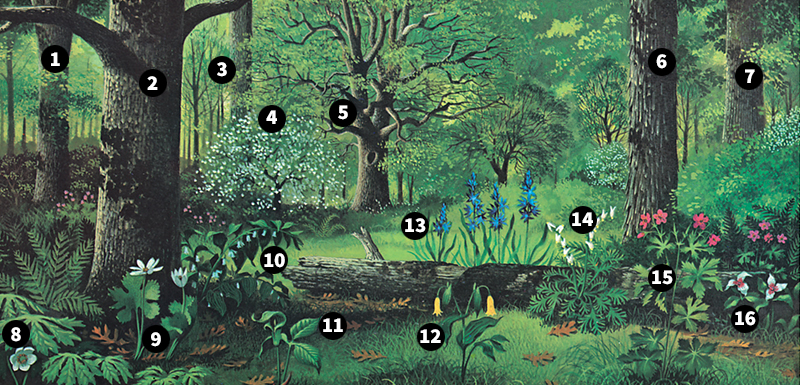Deciduous << dih SIHJ u uhs >> tree is the name for any tree that loses its leaves at a certain time each year and later grows new leaves. In northern temperate regions, most deciduous trees lose their leaves in the autumn. The twigs and branches stay bare all winter. The following spring the trees grow a new set of green leaves. Before the leaves die, some of the food material they contain is drawn back into the twigs and branches. There it is stored and used the following spring. Deciduous trees usually have broad leaves. Such trees include ash, beech, birch, maple, and oak. Larch is a common deciduous tree that has needlelike leaves.

Dried leaves continue to hang on the branches of some deciduous trees until the new leaves come out. In warmer climates, deciduous trees grow new leaves earlier in the spring and retain their leaves longer.
Scientists think that losing the leaves helps some trees to conserve water in the winter. Water normally passes into the air from tree leaves by a process called transpiration.
See also Tree (Broadleaf trees).
